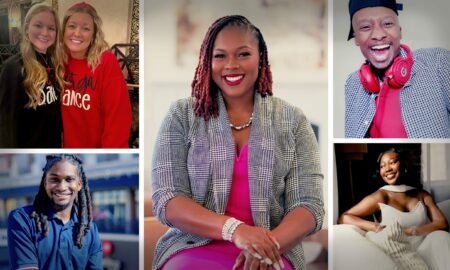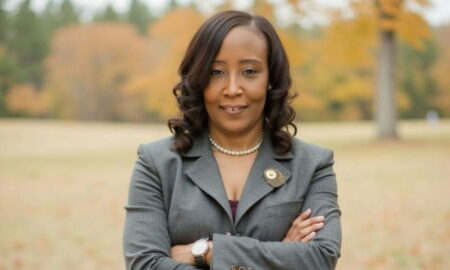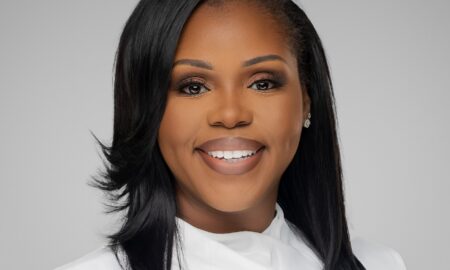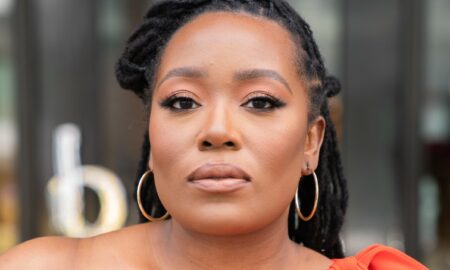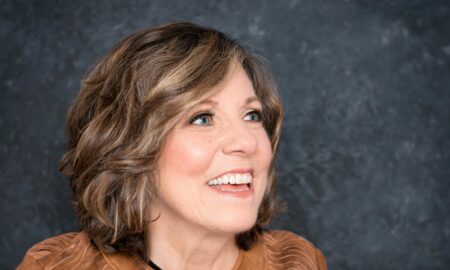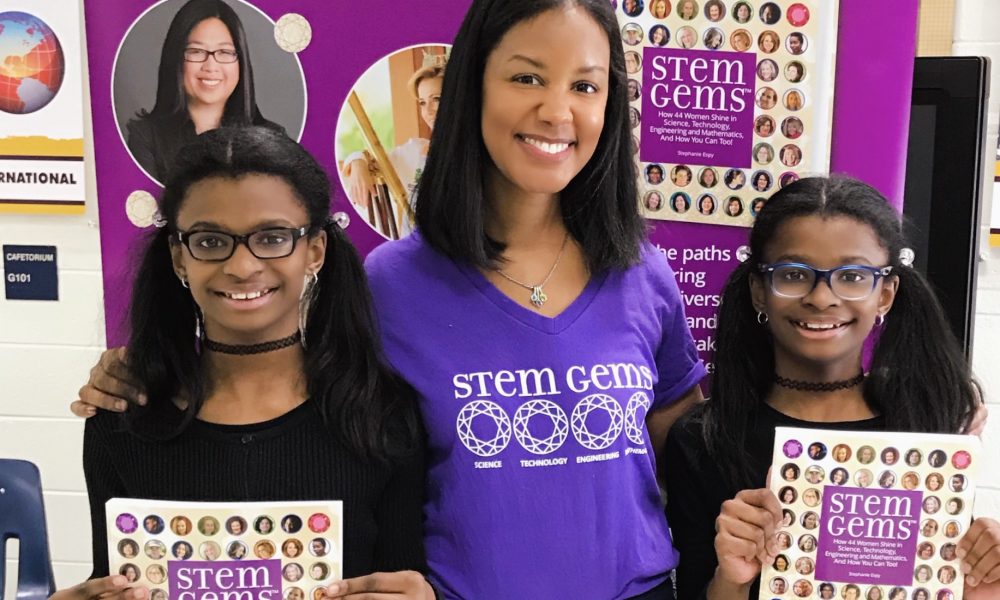

Today we’d like to introduce you to Stephanie Espy.
Stephanie, please share your story with us. How did you get to where you are today?
My mother is, first and foremost, a rock star when it comes to baking chocolate chip cookies. She is also an environmental engineer with degrees in math and engineering. But her saving the planet isn’t the part I remember most when I was six. Today, when the buttery aroma of warm cocoa and vanilla fill my parents’ home, the scent puts me firmly inside a memory at our yellow Formica countertop, standing bare-footed on a chair in my pajamas, Mom invited me into her world of chemistry: solid to liquid butter, dry measure versus wet measure, the transition of baking soda into carbon dioxide gas to make the cookies rise. Those days spent together in the kitchen had little to do with engineering the perfect cookie but everything to do with creating fond memories and shaping a young STEM Gem.
STEM is everywhere. From a young age, my parents championed this principle. Illustrating the ubiquity of STEM at every stage of my development had a major impact on my desire to become an engineer. With my mother, I measured ingredients in my favorite recipes and calculated discounts at holiday sales on my favorite toys. From her, I learned about ratios, proportions, percents, fractions and so many other applications to math – without even knowing it. My father, an electrical engineer and computer guru, introduced me to the Internet and its applications years before it became mainstream. When joined with exceptional teachers throughout my education, the trifecta of inspiration was a powerful motivating force.
As an undergraduate chemical engineering student at the Massachusetts Institute of Technology and a graduate student at the University of California at Berkeley, I realized the power of a STEM degree—how valuable it is to be able to think critically, solve complex problems, and find solutions to the most pressing issues we face in society. STEM has afforded me so many opportunities, so many ways to make a difference. I knew I had unlimited options in nearly any industry. The world was mine.
After completing three degrees, including an MBA from Emory University, and several internships, I turned down numerous six-figure-salary job offers in corporate America. Instead, I chose to tackle an issue that has always been close to my heart: closing the gender gap in STEM. I set out to help middle and high school students become more STEM fluent—the ability to solve problems, think critically and logically, apply theory, and innovate. STEM fluency is a way of thinking and learning that empowers complete foundational knowledge of the subject at hand. Having an early start in understanding STEM concepts was pivotal for my interest and development, and I wanted to help students at those critical ages when many begin to lose interest in math and science. I wanted to teach them about the ubiquity of STEM and the beauty of math and science like my parents and teachers did for me. And that’s how MathSP (S for Strategies and P for Problem-solving) was born. MathSP provides STEM-based academic coaching and comprehensive test-prep coaching to students in middle school, high school, and beyond.
MathSP is great for strengthening math and science skills while also instilling confidence, but it didn’t go far enough to address the STEM deficit. Helping students to connect math and science concepts to STEM careers was the missing piece. I wanted to expose students, girls and young women in particular, to career opportunities they didn’t know existed. STEM careers aren’t lauded in the media, and most girls don’t personally know someone who illustrates such options. How could young women elevate their thinking if they are not aware of the opportunities available to them? I also wanted to expose girls and young women to STEM paths that are traditionally considered male-only opportunities. This quest to deepen STEM interest, to uncover varied opportunities, and to give girls and young women female role models in STEM formed the seed of inspiration for the STEM Gems book.
In creating STEM Gems: How 44 Women Shine in Science, Technology, Engineering and Mathematics, And How You Can Too, I first brainstormed a list of careers that impact the world every day, that help people, and that makes a difference. Some of the careers may be familiar to readers, but many are careers that are not as well known, especially to girls and young women. I listed amazing career opportunities that I wished I knew about when I was a tween. I thought of careers that are traditionally male-dominated but are making strides to attract more women. I included a wide range of careers that represented each of the four STEM disciplines. In the end, the 44 careers highlighted in the book include 12 in science, 10 in technology, 10 in engineering, and 12 in mathematics.
Next, I combed the Internet and STEM journals to identify women in the respective careers then contacted them one by one. The vast majority of the women were thrilled to be a part of such a powerful resource to inspire girls and young women—and their enthusiasm made me even more excited to get to work. They shared their stories, unedited, as learning from mistakes proves just as important as from accomplishments. All were on the table to empower girls and young women and to give them the tools to shine. Each interview began with their own explanation of their work in a way that simplifies and underscores the impact they make each day. They went on to answer questions that delve into inspiration and motivation. They discussed their wins and their failures, their mentors and champions, their personal role models — all in an effort to create the perfect insiders’ guide to how they became a successful STEM Gem. Girls will be able to use this roadmap to chart their own careers.
After the interviews were completed, many overlapping themes emerged that illustrated key components critical to the successes of the 44 STEM Gems. These themes evolved into eight how-to chapters to give young women tangible, actionable steps they can take, starting immediately, to create their unique STEM career paths. The chapters conclude with a checklist of action items to guide girls and young women toward logical next steps. Lastly, I wanted to make sure that the writing style and language for each of the 44 stories and eight chapters was appropriate for young readers. I asked a group of tween and teen girls to beta read the chapters to ensure they were written in a way that was relatable and easy to understand.
STEM Gems is the book I wish I had growing up. The influence of my parents, teachers, and other family members from an early age encouraged my interest in STEM and at a later age, inspired me to make an impact on the STEM world by doing my part to close the gender gap. I hope the STEM Gems book becomes that spark for young women who are not yet STEM fluent and that enduring fire for other young women to keep the spark going. The 44 women featured in the book are dynamic and amazing. Their stories captivate and inspire. They invite readers into their worlds, much like my mother did for me at that yellow countertop all those years ago. And who knows? Maybe a future STEM Gem will create the perfectly delicious, calorie-free chocolate chip cookie.
Overall, has it been relatively smooth? If not, what were some of the struggles along the way?
My very first experience working as a chemical engineer was at a manufacturing plant in Augusta, Georgia. Because of the hazardous chemicals that I handled, I wore a hard hat, steel toe boots and fire-resistant clothing from head to toe. I spent most of my time outside in the plant climbing ladders in temperatures over 100 degrees.
This particular plant manufactured polymers, which is a fancy word for plastics. Polymers have countless uses in our daily lives in many consumer products. Everything that you’re wearing today, from the glasses on your face the shoes on your feet are made from polymers. I worked as process design engineer, so think about a black box: In comes different chemicals with different properties and outcomes polymers that are sent all over the world to make products that we use each and every day. My job was to design and optimize this ‘black box’: this process of manufacturing polymers. It wasn’t the most glamorous job, but I loved it. I felt like I was making a difference. But as I looked around me I wondered, where are the women? You see, I was the only woman in the entire operation.
In my next job, I took a huge risk: I packed my bags, flew 4,204 miles (the distance from Atlanta, Georgia to London, England), to live and work outside of London in a town called Sunbury at the BP British headquarters. My job here was to use mathematical modeling and computer simulations to prevent gas explosions from happening on oil rigs. Here again, I enjoyed my work and I really felt like I was making a difference. Not only was I the only American on my team, but yet again, I was also the only woman.
I left England and moved to northern California to pursue a graduate degree in Chemical Engineering at the University of California Berkeley. It was in grad school that I worked on a special project with the US Department of Agriculture. My job was to genetically engineer a particular natural rubber plant species to make higher quality natural rubber in high yield. At the time, the US imported 100% of its natural rubber because it lacked the proper climate to grow the plant domestically. But there were another plant species that we can grow here, that we were interested in exploring and manipulating to get the same quality rubber that we got from the one we imported. So that was my challenge, and after many, many, many, failed experiments, it worked! So much so that the US now grows these engineered rubber-producing plants in the western states that have the dry climate they need to grow. This was a groundbreaking achievement. I was even able to publish two papers based on my novel research. I was ecstatic. But yet again, I was one of few female graduate students in my lab, and the only African-American.
THE GENDER GAP IS REAL:
There is a severe underrepresentation of women in STEM careers. Women comprise 47% of total U.S. labor force.
Women earn:
39% of bachelor’s degrees in physical sciences
19% of bachelor’s degrees in engineering
18% of bachelor’s degrees in computer science
Minority women earn:
6% of bachelor’s degrees in physical sciences
3% of bachelor’s degrees in engineering
5% of bachelor’s degrees in computer science
Women make up only 24% of all STEM jobs.
We need more women innovators, problem-solvers and researchers. We need more women at the table being CREATORS and not just CONSUMERS.
Please tell us about Two businesses: STEM Gems Book and MathSP (Strategies & Problem-solving) Academic and Test Prep Coaching.
MathSP is the only STEM-focused academic coaching company in the state of Georgia. By cultivating our students’ core problem-solving skills and analytical abilities, we empower them to achieve superior results in academic subjects and on high school entrance, college entrance and graduate school entrance exams, while also equipping them with a true understanding of the concepts at work.
Our students are the next generation of inventors, problem-solvers, and game changers. It is our responsibility to ignite their curiosity and passion for the world they live in.
Founded in 2009 to strengthen the quality of STEM education provided in Georgia, MathSP transforms the lives of its students by unlocking their potential, imparting a world-class education that centralizes problem-solving and critical thinking, and empowering them to achieve their dreams and thrive.
By optimizing our students’ STEM skills and equipping them with winning strategies for comprehensive test preparation, our expert coaches exceed expectations and deliver results.
STEM Gems:
“If the only STEM role models young girls hear about are men, this will discourage them from pursuing STEM subjects. By making it seem like only men can succeed in science, a lack of role models creates barriers during early development that prevent girls from believing they have a future in these fields.”
In STEM Gems, girls and young women will discover:
-The stories of 44 inspiring women in 44 diverse STEM careers and how they made it
-The challenges these incredible women faced in pursuit of their dreams
-The tremendous accomplishments these Gems have achieved in their respective STEM fields
-Advice on how to pursue science, technology, engineering and mathematics careers
-Actionable steps girls and young women can take right now to set themselves up for success
-What girls and young women can expect in a promising STEM career, and much, much more!
Through the powerful stories of the STEM Gems in this book, girls and young women will have their pick of current role models of all ages, ethnicities and job types. And through the eight chapters that outline actionable steps, girls and young women will learn what they can do right now, today, to set themselves up for success and to create their own unique paths.
The STEM Gems book is relatable, encouraging and inspiring, demonstrating the limitless possibilities for the next generation of women.
STEM isn’t a special brain. STEM doesn’t come from a life of privilege. STEM is simply an exposure to what is possible and an internal belief that anyone can be a STEM Gem.
Truly, anyone!
Contact Info:
- Website: www.STEMGemsBook.com and www.MathSP.com
- Instagram: https://www.instagram.com/stemgemsbook/
- Facebook: https://www.facebook.com/stemgemsbook/
- Twitter: https://twitter.com/stemgemsbook/









Getting in touch: VoyageATL is built on recommendations from the community; it’s how we uncover hidden gems, so if you know someone who deserves recognition please let us know here.












